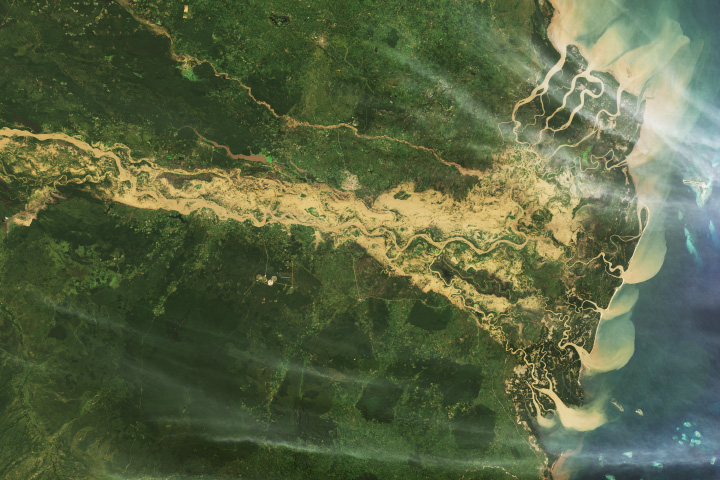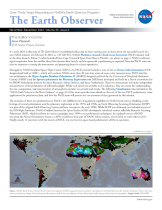- Home
- Missions
- Data
- Communications
- People
- The Earth Observer Newsletter




Recent Imagery
You will be directed to the NASA Visible Earth webpage when you select Images by Mission below, or click on the images at right that are randomly generated to represent four out of all possible topics.
The Earth Observer: Nov - Dec, 1992
In This Issue
Click title below to view page
PENDING: needs to be manually entered; encountered problem when copying/pasting
Editor's Corner
Michael King, EOS Senior Project Scientist
On December 17, 1992, Shelby Tilford concurred with the recommendations of the Science, Engineering, and Project Team that reviewed MLS and SAFIRE to select MLS for flight on the first EOS Chemistry flight in 2002. This decision was arrived at with great care. The review team was impressed with both instruments and, were more resources available, would have supported the flight of both instruments on the same spacecraft.
The selection of MLS over SAFIRE was based on the following scientific considerations: 1) the ability to obtain accurate vertical profiles of ClO throughout the stratosphere and BrO in the middle stratosphere, key radicals in ozone loss; 2) the ability to measure upper tropospheric water vapor in the presence of clouds, a key variable in climate impact assessments; 3) the ability to measure S02 arising from volcanic eruptions, with no degradation from polar stratospheric clouds, ice clouds or aerosols; and 4) a modular design that permits additional radiometers to be added that would extend the measurement capability to include vertical profiles of OH, H2O, N20 and other gases throughout the stratosphere. The baseline instrument includes the ability to measure 03 , temperature, and pressure, as does SAFIRE. Both the MLS and SAFIRE teams are to be commended for the very professional and thoughtful development of their respective proposals, and their collaborations with international partners. Finally, the combination of MLS (with OH) and HIRDLS, along with SOLSTICE II and SAGE III meets all of the requirements laid down by the Atmospheres Panel.
The instrument being pursued for flight on Chemistry-1 is the 'focused' MLS, consisting of the 'baseline' MLS (ClO,
Read more...

